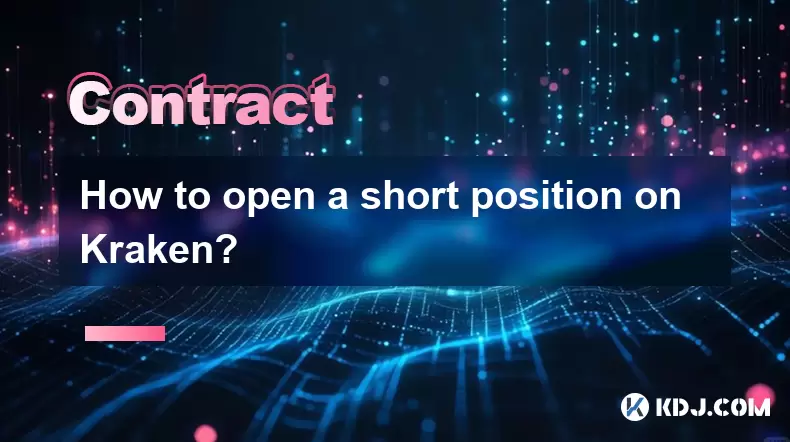-
 Bitcoin
Bitcoin $117400
-0.46% -
 Ethereum
Ethereum $3768
0.60% -
 XRP
XRP $3.551
2.09% -
 Tether USDt
Tether USDt $1.000
0.00% -
 Solana
Solana $203.2
11.30% -
 BNB
BNB $770.9
1.92% -
 USDC
USDC $0.9999
0.01% -
 Dogecoin
Dogecoin $0.2709
-0.02% -
 Cardano
Cardano $0.9024
4.49% -
 TRON
TRON $0.3139
0.60% -
 Hyperliquid
Hyperliquid $45.60
-1.41% -
 Stellar
Stellar $0.4730
-1.34% -
 Sui
Sui $4.025
2.15% -
 Chainlink
Chainlink $19.79
2.19% -
 Hedera
Hedera $0.2724
-2.39% -
 Avalanche
Avalanche $25.93
3.05% -
 Bitcoin Cash
Bitcoin Cash $524.0
-1.83% -
 Shiba Inu
Shiba Inu $0.00001558
0.50% -
 Litecoin
Litecoin $116.7
-0.30% -
 UNUS SED LEO
UNUS SED LEO $8.996
0.00% -
 Toncoin
Toncoin $3.334
1.83% -
 Polkadot
Polkadot $4.506
0.34% -
 Uniswap
Uniswap $10.99
4.83% -
 Ethena USDe
Ethena USDe $1.001
0.03% -
 Pepe
Pepe $0.00001461
3.17% -
 Monero
Monero $320.3
-1.01% -
 Bitget Token
Bitget Token $4.935
0.36% -
 Dai
Dai $0.9998
0.00% -
 Aave
Aave $322.4
-1.25% -
 Bittensor
Bittensor $455.6
9.33%
How to set up two-factor authentication for futures trading?
Two-factor authentication is crucial for futures trading—it adds a vital security layer beyond passwords, protecting leveraged positions from hacks, phishing, and unauthorized access.
Jul 22, 2025 at 05:22 pm

Why Two-Factor Authentication Is Essential for Futures Trading
When engaging in futures trading on cryptocurrency platforms, security must be prioritized. Unlike spot trading, futures involve leverage and margin, increasing the financial risk if your account is compromised. Two-factor authentication (2FA) adds a critical second layer of identity verification beyond your password. Without 2FA, your account is vulnerable to phishing, credential stuffing, and session hijacking. Enabling 2FA ensures that even if your password is stolen, unauthorized access is blocked without the second factor—typically a time-sensitive code from an authenticator app.
Choosing the Right 2FA Method for Your Exchange
Most crypto exchanges support multiple 2FA options, but not all are equally secure. Authenticator apps like Google Authenticator, Authy, or Microsoft Authenticator are the most recommended because they generate time-based one-time passwords (TOTP) locally on your device. Avoid SMS-based 2FA—it’s susceptible to SIM-swapping attacks. Some platforms also offer hardware security keys (e.g., YubiKey), which provide the strongest protection but may not be supported for futures trading specifically. Always check your exchange’s official documentation to confirm 2FA compatibility with futures accounts.
Step-by-Step Setup on a Major Exchange (e.g., Binance or Bybit)
- Navigate to your account security settings, typically under “Security” or “Account Protection.”
- Locate the 2FA section and select “Enable Authenticator App.”
- Scan the QR code displayed on-screen using your authenticator app.
- Enter the 6-digit code generated by the app into the exchange’s verification field.
- Confirm the setup by entering your password or email verification if prompted.
- Download or save the recovery codes provided—these are essential if you lose access to your 2FA device.
Never skip the recovery code step. Store them offline in a secure location like a password manager or printed document in a safe.
Special Considerations for Futures-Specific Security
Some exchanges separate 2FA settings for spot and futures accounts. For example, on Bybit, you must enable 2FA for both “Main Account” and “Unified Margin Account” independently. Ensure 2FA is activated specifically for futures trading permissions, such as order placement, margin adjustments, and position closing. If only spot trading is protected, your leveraged positions remain at risk. Double-check that futures-related actions trigger 2FA prompts during test transactions before deploying real funds.Troubleshooting Common 2FA Issues in Futures Platforms
If you’re locked out of your futures account due to 2FA: - First, verify that your device’s time is synchronized—TOTP codes fail if the clock is off by more than 30 seconds.
- If the authenticator app isn’t generating codes, reinstall it and restore from a backup (if using Authy).
- Use one of your recovery codes to regain access immediately—do not wait for support.
- Contact exchange support only if recovery codes are lost; they may require identity verification, which can take hours or days—critical during volatile markets.
Avoid disabling 2FA to “make things easier.” The convenience is not worth the risk of losing your entire futures balance.
Frequently Asked Questions
Can I use the same 2FA app for multiple exchanges?
Yes, apps like Google Authenticator and Authy allow you to add multiple accounts. Each exchange will generate a unique secret key during setup, so codes remain independent. Just ensure each entry is clearly labeled (e.g., “Binance Futures” vs. “Bybit Futures”) to avoid confusion during login.What happens if I lose my 2FA device and don’t have recovery codes?
You may permanently lose access to your futures account. Most exchanges cannot bypass 2FA without recovery codes or a hardware key. This is why saving recovery codes in at least two secure, separate locations is non-negotiable.Does 2FA slow down my trading execution?
No. The 2FA prompt typically appears only during login or when modifying sensitive settings—not during live order placement. Some platforms allow “trusted devices” where 2FA isn’t required repeatedly within a session, but always re-enable it after logging out.Is it safe to store 2FA recovery codes in a cloud note?
No. Storing recovery codes in cloud notes (like Google Keep or iCloud Notes) exposes them to account breaches. Save them offline—printed and stored physically or in an encrypted local file on a secure device. Cloud storage defeats the purpose of 2FA if the codes are accessible online.
Disclaimer:info@kdj.com
The information provided is not trading advice. kdj.com does not assume any responsibility for any investments made based on the information provided in this article. Cryptocurrencies are highly volatile and it is highly recommended that you invest with caution after thorough research!
If you believe that the content used on this website infringes your copyright, please contact us immediately (info@kdj.com) and we will delete it promptly.
- XRP, Bitcoin, Ripplecoin: Navigating the Crypto Landscape in 2025
- 2025-07-22 20:30:13
- Cardano Ecosystem Watch: Can PayFi Token Remittix Trigger an ADA Overtake?
- 2025-07-22 20:50:13
- JasmyCoin Price Forecast: Chart Analysis Points to Potential Surge
- 2025-07-22 20:55:13
- Trump, Bitcoin, and Altcoins: A New York Minute on Crypto's Political Play
- 2025-07-22 21:00:13
- Shiba Inu, XRP, and Little Pepe: Navigating the Meme Coin Mania in NYC
- 2025-07-22 21:30:13
- Bitcoin's Role in IntelBroker's Takedown: A New Era of Crypto Crime Enforcement
- 2025-07-22 21:10:15
Related knowledge

KuCoin Futures restricted countries
Jul 22,2025 at 09:00pm
Understanding KuCoin Futures and Geographic RestrictionsKuCoin Futures is a popular platform for trading perpetual and delivery futures contracts on c...

How to set a stop loss on KuCoin Futures?
Jul 22,2025 at 08:01pm
Understanding Stop Loss in KuCoin FuturesA stop loss is a risk management tool that automatically closes a position when the market moves against you ...

What are the trading hours for Kraken futures?
Jul 22,2025 at 08:49pm
Understanding Kraken Futures Trading HoursKraken Futures, a product of the well-established cryptocurrency exchange Kraken, offers users the ability t...

How to chart on Kraken Pro for futures?
Jul 22,2025 at 07:42pm
Understanding Kraken Pro Futures InterfaceBefore diving into charting, it’s essential to recognize how Kraken Pro structures its futures trading envir...

Is Kraken futures safe?
Jul 22,2025 at 08:07pm
Understanding Kraken Futures and Its Regulatory FrameworkKraken Futures, operated by the well-known cryptocurrency exchange Kraken, is a platform desi...

How to open a short position on Kraken?
Jul 22,2025 at 05:00pm
Understanding Short Positions in CryptocurrencyA short position allows traders to profit from a decline in the price of an asset. On Kraken, this is p...

KuCoin Futures restricted countries
Jul 22,2025 at 09:00pm
Understanding KuCoin Futures and Geographic RestrictionsKuCoin Futures is a popular platform for trading perpetual and delivery futures contracts on c...

How to set a stop loss on KuCoin Futures?
Jul 22,2025 at 08:01pm
Understanding Stop Loss in KuCoin FuturesA stop loss is a risk management tool that automatically closes a position when the market moves against you ...

What are the trading hours for Kraken futures?
Jul 22,2025 at 08:49pm
Understanding Kraken Futures Trading HoursKraken Futures, a product of the well-established cryptocurrency exchange Kraken, offers users the ability t...

How to chart on Kraken Pro for futures?
Jul 22,2025 at 07:42pm
Understanding Kraken Pro Futures InterfaceBefore diving into charting, it’s essential to recognize how Kraken Pro structures its futures trading envir...

Is Kraken futures safe?
Jul 22,2025 at 08:07pm
Understanding Kraken Futures and Its Regulatory FrameworkKraken Futures, operated by the well-known cryptocurrency exchange Kraken, is a platform desi...

How to open a short position on Kraken?
Jul 22,2025 at 05:00pm
Understanding Short Positions in CryptocurrencyA short position allows traders to profit from a decline in the price of an asset. On Kraken, this is p...
See all articles

























































































